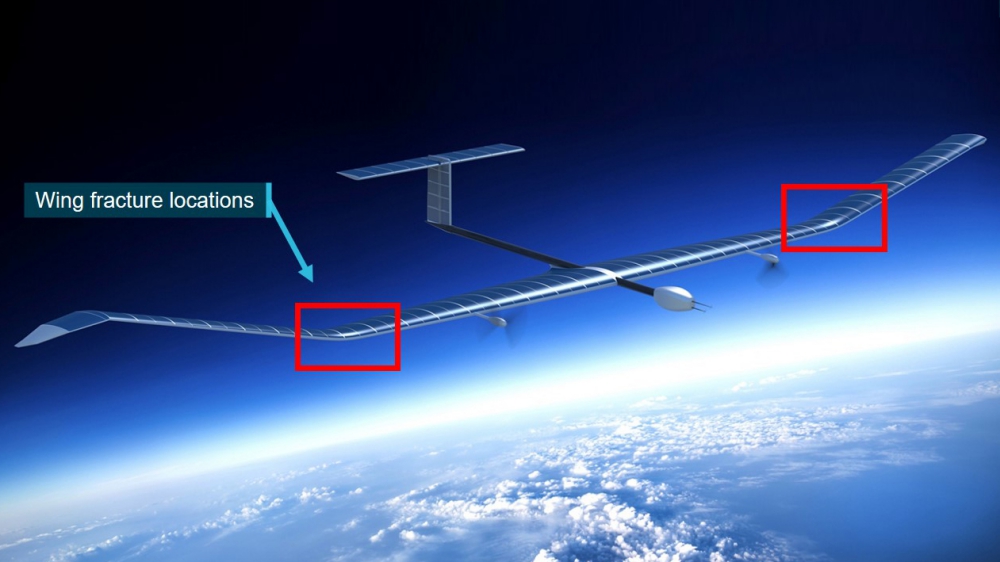In 2019 an Airbus Zephyr high-altitude UAV broke up in-flight after encountering unstable atmospheric conditions which resulted in a series of un-commanded rolls and an uncontrolled spiral descent over remote northern Western Australia, according to a new Australian Transport Safety Bureau (ATSB) report.
The Zephyr unmanned aerial vehicle (UAV), designed as an ultra-light high-altitude pseudo‑satellite, had launched from Wyndham Airport on 28 September 2019 for a high altitude flight. The UAV was being operated by Airbus and the purpose of the flight was to conduct beyond visual line of site, high-altitude aerial work.
While climbing through an altitude of 5,200 feet and about one hour after launch, the UAV encountered unstable atmospheric conditions that resulted in an uncommanded roll to the right and a track change of about 180° before self-recovery. The flight crew in the ground control station, comprising a remote pilot, a remote pilot in command, a mission planner and a flight test engineer, elected to continue the climb and directed the UAV towards the north in anticipation of smoother conditions.
However, atmospheric conditions became increasingly unstable and the UAV, as it passed through 8,700 feet, experienced a second uncommanded roll but again was able to self-correct, with the crew increasing power and directing the aircraft to calmer conditions. Wind conditions reduced groundspeed to around 1 knot, reducing its ability to move out of the unstable conditions in a timely manner, and the Zephyr descended about 1,000 feet over the next 7 minutes.
The UAV then experienced a third uncommanded roll to the right. Unable to self‑recover, the UAV entered into an uncontrolled spiral descent, during which its maximum airspeed was exceeded and the roll angle increased beyond its structural limitations, resulting in both wings fracturing at about mid-span.
ATSB acting Director Transport Safety Derek Hoffmeister noted that the solar-electric Zephyr was designed to operate in the stratosphere, above the weather and conventional air traffic, and was extremely sensitive to atmospheric instability during the climb and descent phases.
“Once the Zephyr entered an area of unstable atmospheric conditions that exceeded the aircraft’s ability to remain in the flight envelope, an in-flight break-up occurred,” Mr Hoffmeister said.
A separate Zephyr UAV was involved in an accident after launching from Wyndham in March 2019. The September 2019 accident was only the second launch from Wyndham for the Zephyr program.
“At the time of the occurrence, the Zephyr program was in its early operation phase. As such, information regarding the UAV’s structural limitations and methods to forecast turbulence were still evolving,” Mr Hoffmeister said.
“However, operational and post-crash management procedures were effective in minimising risk to the public and environment.”
In response to this accident, Airbus conducted an investigation of this occurrence, which resulted in several safety recommendations being directed to the design and operational departments of the Zephyr program.
“The number of UAVs and remotely piloted aircraft in Australia, and worldwide, is increasing rapidly,” Mr Hoffmeister said.
“Through reporting and investigation of UAV and remotely piloted aircraft accidents and incidents, the ATSB is able to monitor trends and identify areas for safety improvement.
“This information helps to enhance the safety of all aircraft, and the public in general, enabling this sector of the aviation industry to continue to grow and develop.”
Source: Press Release

